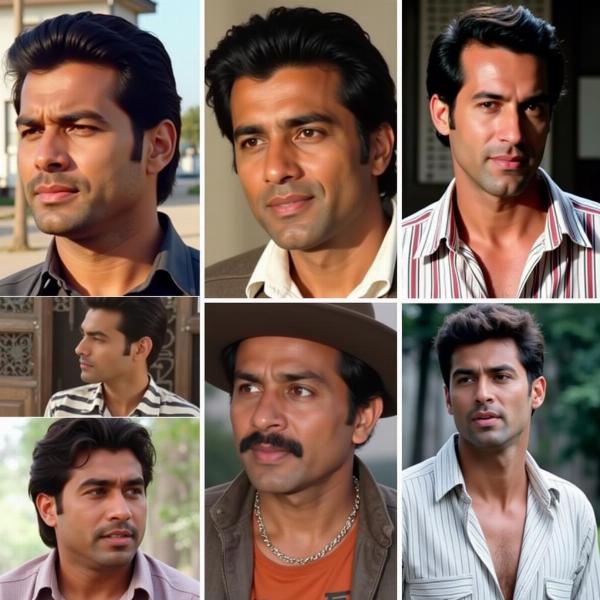Understanding the term “handsome munda” requires delving into the nuances of Hindi and Punjabi culture. While “handsome” is easily understood as attractive, “munda” is a Punjabi word that translates to “boy” or “young man” in Hindi. Therefore, “handsome munda” simply refers to a good-looking young man. This phrase is frequently used in casual conversations, Bollywood songs, and social media, reflecting its widespread acceptance and understanding.
Decoding “Munda”: Beyond Just “Boy”
While “munda” literally translates to “boy,” it carries a deeper cultural significance, especially in Punjabi culture. It often signifies a young man with a sense of vibrancy, energy, and a certain rustic charm. It’s not just about physical appearance but also embodies a certain attitude and personality. This adds another layer to the meaning of “handsome munda,” implying not just good looks, but also a captivating personality.
Regional Variations and Usage
Although “munda” is primarily a Punjabi word, its usage has spread across North India, often intermingling with Hindi. In some regions, it can also be used affectionately to address a younger male relative, regardless of his looks. This widespread usage underscores the term’s versatility and integration into everyday language.
Handsome Munda in Popular Culture
The phrase “handsome munda” frequently appears in Bollywood songs and movies, further cementing its place in popular culture. These portrayals often depict the “handsome munda” as a charming, charismatic figure, further enriching the term’s meaning. Its use in social media further reinforces its relevance and widespread understanding.
 Handsome Munda in Bollywood
Handsome Munda in Bollywood
What Makes a “Handsome Munda”?
Defining handsomeness is subjective, but certain qualities are often associated with the term “handsome munda.” Physical attractiveness plays a role, but other factors like confidence, a good sense of humor, and respect for traditions are also highly valued. This holistic approach makes the term more nuanced than simply referring to outward appearance.
Beyond the Surface: Inner Qualities
While physical appearance contributes to the initial impression, qualities like kindness, intelligence, and a strong work ethic are equally important in defining a “handsome munda.” These inner qualities contribute to a well-rounded personality, making the individual truly appealing.
Conclusion: More Than Meets the Eye
The term “handsome munda” is more than just a simple description of a good-looking young man. It encompasses cultural connotations, personality traits, and a certain charm that goes beyond mere physical appearance. It’s a term deeply embedded in North Indian culture, reflecting a holistic appreciation of masculinity.
FAQ:
- What is the literal meaning of “munda”? “Munda” literally translates to “boy” or “young man.”
- Is “munda” a Hindi word? “Munda” is primarily a Punjabi word but is widely used in North India, including in Hindi conversations.
- Does “handsome munda” only refer to physical appearance? While physical attractiveness is a component, “handsome munda” also implies certain personality traits like charm, confidence, and respect for traditions.
- Why is “handsome munda” used so frequently? Its frequent usage in Bollywood, social media, and everyday conversations reflects its widespread acceptance and understanding.
- What are some qualities associated with a “handsome munda”? Confidence, a good sense of humor, kindness, intelligence, and a strong work ethic are some qualities often associated with the term.
Meaning-Hindi.in is your trusted partner for professional Hindi translation services. We specialize in various domains, including business and commercial documents, legal and certified translations, technical manuals, website localization, and educational materials. Whether you need quick turnaround times or specialized industry expertise, our team of skilled linguists is dedicated to providing accurate and culturally sensitive translations. Contact us today at [email protected] or +91 11-4502-7584. Meaning-Hindi.in is your gateway to bridging language barriers and connecting with the world.